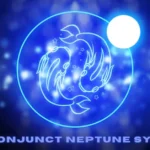Welcome to the puzzling world of crosswords! If you’re someone who loves a mental challenge and enjoys wordsmithing, then you’re in for a treat. Today, we are diving into the intricacies of one of the most iconic crossword puzzles out there – The New York Times crossword. Get ready to unravel the mystery behind ‘Goads On NYT’ and sharpen your mind with some intriguing wordplay. Let’s crack this puzzle together!
The history of the New York Times crossword puzzle
The New York Times crossword puzzle has a rich history that dates back to the early 1940s, captivating puzzlers with its unique blend of challenge and creativity. Over the years, it has become an iconic feature of the newspaper, attracting millions of dedicated solvers from around the world.
Initially introduced as a way to fill newspaper space during World War II, the NYT crossword quickly gained popularity for its clever wordplay and ever-evolving difficulty levels. What started as a simple pastime soon turned into a daily ritual for many enthusiasts who craved mental stimulation and linguistic acrobatics.
As technology advanced, so did the puzzle format, incorporating new themes, styles, and even digital platforms to cater to modern audiences. Despite these changes, one thing remains constant – the timeless appeal of solving clues and filling in those elusive white squares.
Understanding the clues and format of ‘Goads On NYT’
When tackling the ‘Goads On NYT’ crossword puzzle, understanding the clues is key to unlocking its secrets. Each clue is a cleverly crafted hint that leads you closer to filling in the grid. From straightforward definitions to cryptic wordplay, every clue presents a challenge waiting to be solved.
The format of ‘Goads On NYT’ follows the traditional crossword structure with across and down clues intersecting to form a cohesive puzzle. Pay attention to any theme or patterns that may guide your answers as you navigate through the grid.
Deciphering these clues requires both logic and creativity. Think outside the box and consider multiple meanings for words or phrases; sometimes, the answer lies in unexpected interpretations. Don’t be afraid to brainstorm different possibilities until one fits perfectly into place.
As you delve deeper into this intriguing puzzle, embrace each clue as an opportunity for mental exercise and fun exploration. Stay curious and open-minded as you unravel the mysteries hidden within ‘Goads On NYT’.
Tips and strategies for solving the puzzle
Are you ready to tackle the ‘Goads On NYT’ crossword puzzle like a pro? Here are some tips and strategies to help you crack those challenging clues!
First things first, start by scanning through all the across and down clues. Look for any easy wins – shorter words or phrases that immediately come to mind. These initial answers can act as anchor points for solving the rest of the puzzle.
Next, don’t be afraid to skip around. If you get stuck on one clue, move on to another and come back later with fresh eyes. Sometimes solving other clues can give you hints for the tricky ones.
Another helpful strategy is to pay attention to theme-related clues or recurring patterns in the puzzle. Often, these can provide valuable insights into solving more difficult sections.
And remember, practice makes perfect! The more puzzles you solve, the better you’ll become at deciphering cryptic clues and completing grids with ease.
So grab your pencil (or open your favorite crossword app) and dive into ‘Goads On NYT’ armed with these handy tips!
Common mistakes to avoid
When tackling the ‘Goads On NYT’ crossword puzzle, it’s easy to get caught up in the excitement and rush through without thinking strategically. One common mistake to avoid is ignoring small words like “a” or “the” in clues – they are often crucial!
Another pitfall is not considering alternative meanings for words. Puzzles love wordplay, so be open to multiple interpretations. Additionally, don’t underestimate the power of cross-referencing clues; sometimes one answer can unlock several others.
Avoid tunnel vision by focusing solely on one section of the grid. It’s essential to tackle different areas simultaneously to keep momentum going. Resist the temptation to erase answers too quickly – a seemingly incorrect guess could hold a clue crucial for another part of the puzzle. Stay patient and persistent!
Behind-the-scenes: How the puzzles are created
Ever wondered about the intricate process behind creating those mind-boggling New York Times crossword puzzles? It’s a fascinating journey that starts with the skilled hands and sharp minds of professional crossword constructors. These wizards of words carefully craft each puzzle, ensuring a perfect balance between challenge and solvability.
The process begins with brainstorming themes and filling in the grid with interlocking words like pieces of a complex jigsaw puzzle. Clues are meticulously written to lead you down unexpected paths, testing your vocabulary and wit. Constructing a crossword is an art form that requires creativity, patience, and attention to detail.
Once the puzzle is complete, it undergoes rigorous testing to ensure its fairness and quality. Editors scrutinize every clue and entry to guarantee a satisfying solving experience for avid puzzlers everywhere. The final product is then polished until it shines brightly on the pages of The New York Times – ready to delight and challenge eager solvers around the world.
The benefits of solving crossword puzzles
Solving crossword puzzles offers more than just entertainment; it’s a mental workout that can boost your cognitive skills. Engaging in these mind-bending challenges regularly can improve your vocabulary, enhance problem-solving abilities, and sharpen your focus.
Crossword puzzles provide a fun way to learn new words and trivia while keeping your brain active. They stimulate different areas of the brain, promoting improved memory retention and overall mental acuity. By deciphering clues and filling in answers, you’re giving your brain a beneficial exercise.
Moreover, completing crossword puzzles can be a great stress-reliever. The sense of accomplishment when you fill in that final square or crack a particularly tricky clue releases feel-good endorphins. It’s like solving a puzzle is not only satisfying but also relaxing for the mind.
Incorporating crossword puzzles into your routine can be an enjoyable yet effective means of challenging yourself intellectually and maintaining mental agility over time.
Conclusion
In solving the ‘Goads On NYT’ crossword puzzle, you not only exercise your brain but also immerse yourself in a tradition that has stood the test of time. The New York Times crossword puzzle is a beloved challenge for many, offering a mix of history, pop culture references, and wordplay.
By understanding the clues and format of ‘Goads On NYT’, employing effective strategies, avoiding common pitfalls, and appreciating the behind-the-scenes work that goes into creating these puzzles, you can enhance your puzzling experience and sharpen your cognitive skills.
So grab a pen or pencil (or open that digital app) and embark on the journey of cracking the code of ‘Goads On NYT’. Happy puzzling!
FAQs
Q:What does “Goads On NYT” typically refer to in crossword puzzles?
Ans.”Goads On NYT” often clues the word “nags” or similar synonyms, indicating persistent urging or provocation.
Q:How can I solve “Goads On NYT” clues effectively?
Ans.Focus on synonyms like “nags,” “prods,” or “urges,” matching the context of persistent encouragement or irritation.
Q:Are there variations of answers for “Goads On NYT” clues?
Ans.Yes, crossword setters may use different synonyms like “pesters,” “coaxes,” or “hounds,” depending on the puzzle’s complexity and theme.
Q:Where can I find past solutions to “Goads On NYT” clues?
Ans.Past crossword puzzle archives or crossword-solving communities often discuss and archive solutions to specific clues like “Goads On NYT.”
Q:Any tips for beginners tackling “Goads On NYT” clues?
Ans.Start by identifying synonyms related to persistent urging or provocation, and consider the puzzle’s context to narrow down potential answers effectively.







